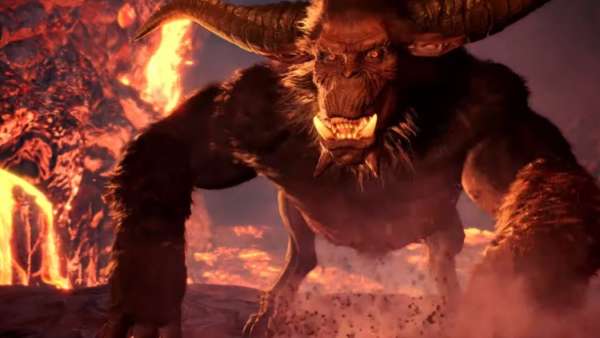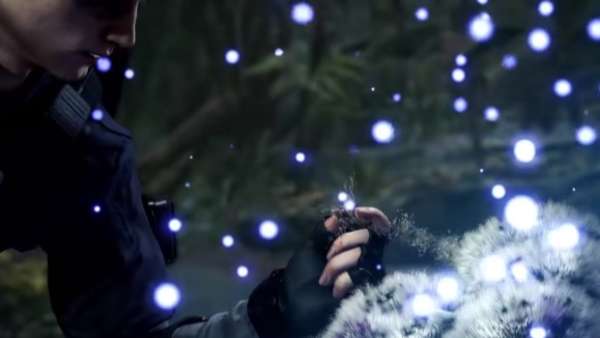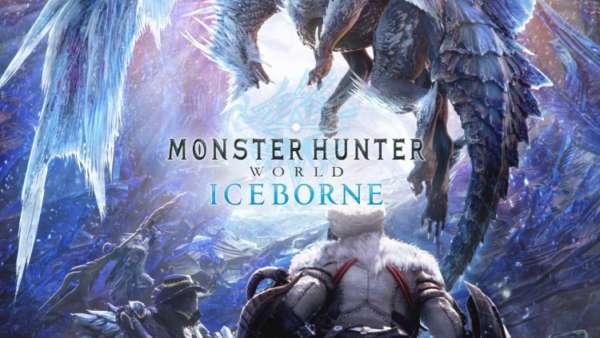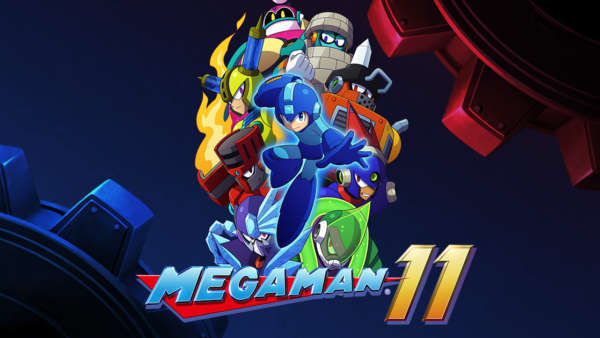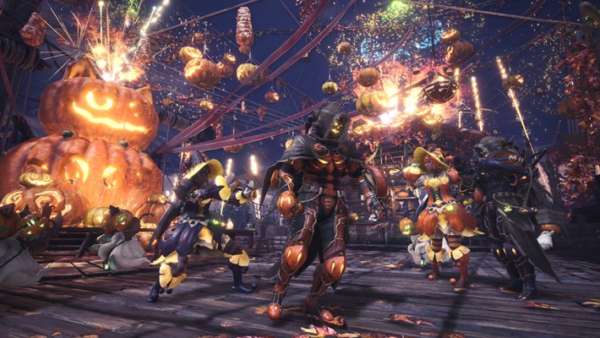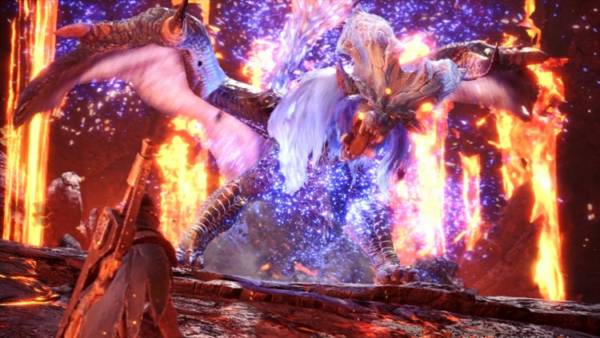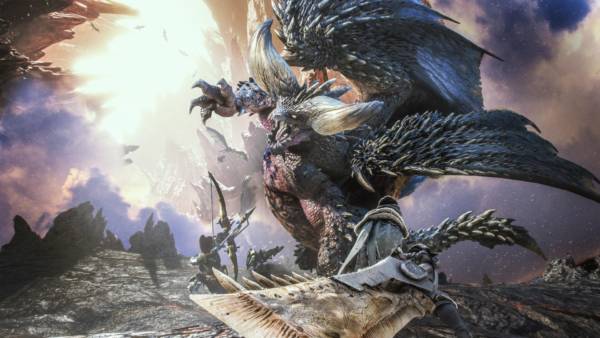When DmC: Devil May Cry was released in 2013 in the twilight of last gen, it was praised by critics for its snappy gameplay, over-the-top dialogue and surreal art direction. The new version of Dante and his hack’n slash journey through the parallel demon realm of Limbo in order to take down the demon king Mundus was well received in general, but the biggest Devil May Cry fans hated its existence regardless. After two years, Ninja Theory has added DmC to an ever-increasing list of Definitve Editions, which take a last-gen game and spruce it up a bit with new graphics or features.
Ninja Theory’s new version of DmC tries its best to reconcile some of the complaints from the more hardcore Devil May Cry fans out there. 2013’s game ran at 30fps on consoles, which for this genre is definitely a minus. This was well known long before the game came out, and the now infamous “feel of 60fps” quote stands as one of the biggest PR gaffes in recent memory. But enough about that, what have Ninja Theory done to improve the experience here?
Well, the game now runs at a flawless 1080p/60fps. This is what the game deserves, and if you didn’t play DmC on PC already, you’re in for a shock as the animation and gameplay positively shines here. This genre is one of the few examples of framerates actually mattering, simply because you can make your game more demanding in terms of timing when you have more increments of time (frames) to play with. For the lover of these games, 60fps really does matter and DmC finally gets it on console.
Several new options have been included which modify the game in interesting ways. There’s the new Turbo mode, which speeds up the game by 20%, making it faster and therefore more skill-intensive. This is a really good addition as it feels closer to the originals than ever before, especially since 2006’s Devil May Cry 3: Special Edition included the same feature. The enemies’ attacks all happen faster, the bosses’ attacks are harder to dodge, and the 60fps only complements it more. Once you toggle Turbo on, you won’t be able to go back.
Another mode is the “Hardcore” mode, which completely rebalances the game’s Style system, which fans were critical of two years ago. During combat, the game ranks your current play with Style points, rewarding variety in combos, dodging and parrying enemy attacks and landing big finishing moves. It was way too easy to achieve the max ranking, SSS, in the 2013 version of DmC. You could literally spam the same move over and over, and if it was a big area-of-effect move that hit multiple enemies, you would easily hit SSS very quickly. In the original Devil May Cry games, especially DMC3, the entire point was that achieving SSS was almost impossible without an extensive working knowledge of all the enemies’ attacks, all of the weapons and combos, and a ton of practice. The hardcore mode achieves this state – I couldn’t get above a D rank most of the time unless I really put the effort in, so getting an SSS rank really feels like an accomplishment.
There’s an option to change how Devil Trigger (Dante’s powered up state) works too, whereas in the first version of the game using it would cause all enemies to float harmlessly in the air, now it just powers up Dante and enemies behave normally. This is nice because you no longer have to go chasing enemies who are floating up there anymore, and it makes you wonder what on earth led Ninja Theory to make that decision in the first place.
All of these tweaks, these extra modes and this increased emphasis on difficulty are attempts to bring the DmC reboot closer to the classic series, but there’s one feature that became make-or-break for fans: a manual lock-on for targeting enemies in combat. There was no manual lock-on in the first version, and this was the deal-breaker for a lot of fans out there. Ninja Theory has tried to include a manual lock-on here, but I’m not sure if anyone has realised how big an impact this can have on the game.
I’m afraid I have to put the emphasis on “tried” here. The lock-on system in Definitive Edition doesn’t change enough about the game to justify its inclusion. Let me explain.
In the classics on PS2, you held R1 to lock on to enemy. When locked on, Dante would face toward that enemy, and the combat moves were performed like the ones you would see in a fighting game – back plus attack would launch the enemy, for example. Also, when locked onto an enemy in those games, the jump button becomes a dodge button when pressing the stick to Dante’s left or right. The lock-on system was fundamental to the game’s controls, and when making their reboot in 2013, Ninja Theory must have decided that this system was too difficult and so spent years designing and building a system that didn’t need it. When public outcry demanded a lock-on system, Ninja Theory had to come up with something for the Definitive Edition.
The lock-on here doesn’t behave at all like it did ten years ago, which is a crying shame. By default, you lock on by holding R1, and the camera will focus on that enemy. All of Dante’s attacks will be targeted toward that enemy, and the camera will be so focused on that particular demon that the game will break a fundamental rule of the genre: no enemies must attack you unless they are on screen.
The controls don’t change when locked on, which is practically unforgiveable. This is the single feature that is being hyped as the one thing above all others that bring it closer to the PS2 era, and it just fails. It gets worse as the game goes on as you get more weapons, due to the way you switch between them in real-time. Since weapon switching is handled by holding a trigger instead of toggling between them, you could be holding up to three shoulder buttons at once to do precisely nothing. How on earth are you supposed to dodge in Angel Mode using the L1 button if you’re already holding R1 and L2? It’s silly.
DmC: Devil May Cry was designed from day one to function without a lock-on and the one implemented here doesn’t go nearly far enough. There’s an option to change the input command of one of Dante’s moves to one that depends on being locked-on to an enemy, and the reality is that Ninja Theory should have extended this option to include every move if a lock-on was ever going to work with this game. I eventually had to go into the options and disable it, returning the game back to its 2013 controls.
Once this happened, however, it became clear that this game just simply wasn’t designed for a lock-on, as there’s an increased emphasis on combo-ing several enemies at once, not just one, than the classic series. Without having to hold R1 to lock on, there are now two dodge buttons meaning you don’t have to contort your fingers around the top of the controller to dodge in Angel Mode. It’s far better to play this game without it. Of course if dodging had been performed with a face button depending on lock-on like it was in the classics, there wouldn’t be this issue.
The game is still worth playing after two years despite all this. The surreal art direction that depicts the alternate reality of Limbo and its maddening architecture is still worthy of praise, and of course it looks great in 1080p running at 60fps. The nightclub section is still a mind-blowing acid trip, and the industrial music in the game from the likes of Combichrist and Noisia still provides a thumping backdrop to the action.
The combat without lock-on is still a deep experience with tons of cool combos you can invent on the fly, with five weapons and three firearms to mix and match as you please in real time.
As is par for the course for these remasters, the game includes the extra content that was once DLC. “Vergil’s Downfall”, in which Dante’s twin brother is playable in his own epilogue, is a substantial edition to the package. Vergil is his own character and has a different play style to Dante – he has lots of new movement abilities in the form of short teleports and other escapes. He’s obviously not as as fully-featured as Dante, with fewer weapons Also included is the Bloody Palace mode, which tasks players with surviving one hundred floors, each with increasingly tough enemies and bosses. There’s a lot of replay value to this package.
Having said all of the above, you are probably already decided on DmC whether you played it or not. It probably stands as one of the biggest PR misfires ever in that its sheer existence causes an army of fans to lose it. In hindsight, while it is a good game, it probably shouldn’t have happened. Two years on, DmC: Devil May Cry Definitive Edition will not convert you if you hated the game before; due to the lock on not bringing the game close enough to the series’ golden age on PS2.
However, if you’re a bit more open-minded, and are looking for a solid action game for PS4 and Xbox One, then definitely pick this up.
